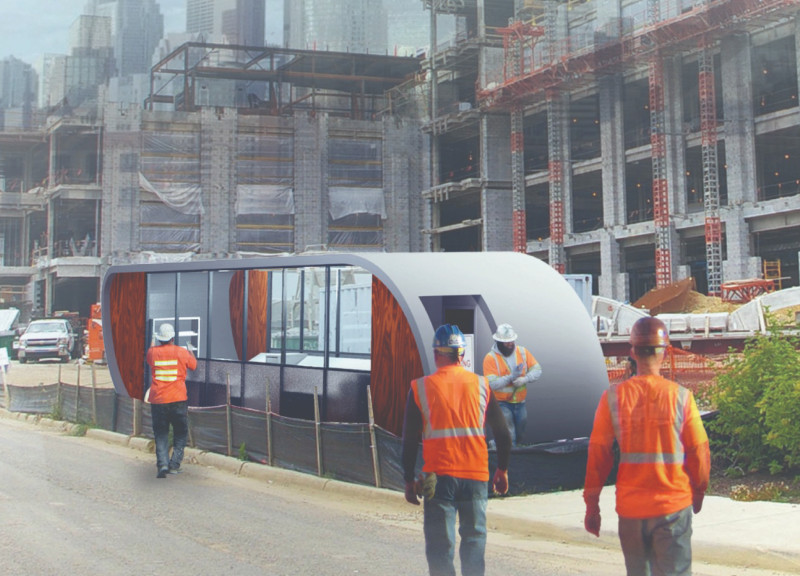5 key facts about this project
LapaCon is a thoughtful design that addresses the challenges of urban development in Toronto, Ontario. The project reimagines traditional construction containers, aiming to combine practical needs with visual appeal. It creates a functional space while improving the overall environment, providing a more inviting urban experience.
Design Concept
The design concept of LapaCon explores the relationship between existing structures and new developments. It confronts the difficulties that arise when trying to blend modern architecture with established contexts. By enhancing the aesthetic value of construction containers, LapaCon strives to foster a welcoming atmosphere that aligns with the character of the surrounding area.
Curved Shapes
A key feature of LapaCon is the use of curved shapes, inspired by natural forms. These curves soften the harsh edges typically found in shipping containers. This design choice promotes a sense of movement while inviting interaction. The flowing lines contribute to a space that feels both dynamic and engaging for those who use it.
Adaptability
Flexibility is an important aspect of LapaCon's design. Built to the standard dimensions of a shipping container, the project retains the ability to move and adapt for various uses. Its side panels can be modified to include features like windows or sustainable cladding. This adaptability allows the structure to blend into different settings while serving a variety of occupant needs.
Utility Integration
LapaCon takes a practical approach to utilities by creating dedicated spaces for systems such as electrical and mechanical services. This planning reduces visual clutter and ensures efficient operation within the structure. By focusing on utility integration, the design maintains a consistent appearance while effectively managing functional requirements.
The final design detail of LapaCon highlights the clean lines created through modern technology and skilled craftsmanship, resulting in a space that invites curiosity and exploration.


























